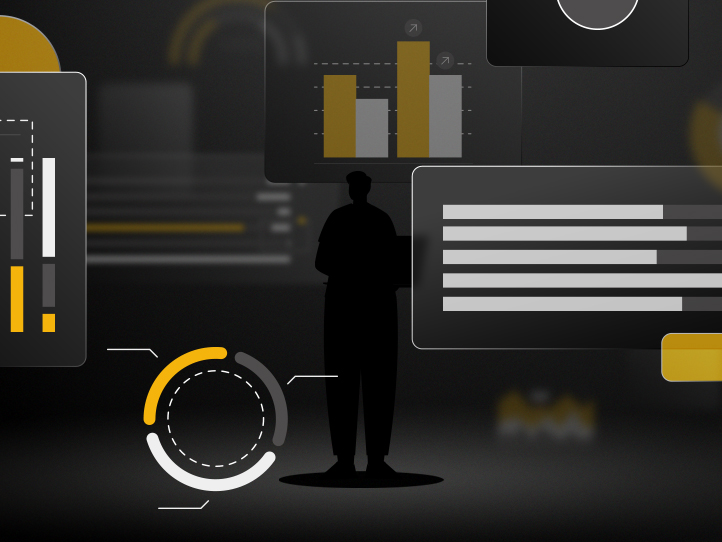B2B marketing and lead generation on LinkedIn

Lead generation's role in B2B marketing
Lead generation plays a crucial role in B2B marketing. With a vast network of over 900 million professionals, studies indicate that 80% of LinkedIn members influence business decisions.

Based on our own experience, we have found that utilising LinkedIn for marketing can significantly benefit your business. Both paid advertising and organic marketing have provided tangible results for us and our clients. Here are some key strategies to increase traffic to your page and effectively turn leads into customers.
1. How to follow a best-practice content strategy
What content should your business be posting?
Adhering to the 80-20 principle is a straightforward yet powerful approach to consider when creating content.
This principle, also called the Pareto Principle, suggests that 80% of results come from 20% of efforts in any given situation. According to Investopedia, the majority of your content, around 80%, should concentrate on building brand recognition by providing educational, entertaining, and problem-solving content within your industry - this is your output.
Only about 20% should be dedicated to directly promoting your business, products, and services - this is your input.
Create impactful headlines that focus on the benefits.
Crafting compelling headlines is crucial when creating content. In today's competitive landscape, it's essential to capture your audience's attention with headlines that drive action. When designing a LinkedIn ad, emphasize to your audience that you can solve their problem. This approach will increase ad clicks and boost brand recognition.
Create a compelling, clear CTA
You need to consider the business goals of your campaign. What action do you want your users to take once they’ve seen your advert? Do you want buyers to visit your website? Download an ebook? You can let them know with a clear call to action.
It’s also important to make sure that the offer, link or download meets or exceeds expectations and benefits set out in the ad copy.
Some good examples of effective CTAs are:
- I’m in
- Sign up and save
- Let’s start a new project together
- Get started
- Get involved
Posting high-quality, relevant content on your LinkedIn Business page will improve your bid in LinkedIn advertising auctions. This is because the LinkedIn relevance score rewards marketers who regularly post content that earns ample clicks, likes, comments, and shares.
2. Why you MUST know your audience
It’s essential to have a deep understanding of your target audience.
An informed approach will ensure you’re targeting the right people and not wasting money or resources. You can build these out by conducting competitor analysis, understanding your ICP (ideal customer profile), evaluating current clients, and reviewing your data and analytics. LinkedIn analytics alone can reveal a lot about your audience.
Ensuring you have these details is critical for informing campaign-creation tasks, such as audience segmentation and persona- or vertical-specific messaging.
This way, you know the content you create and the paid advertising you run will resonate with your audience as you're targeting them based on their intent.
3. Are you falling short not utilising employee advocacy
The importance of employee advocacy when it comes to your online reputation cannot be overstated. If your employees champion your brand and engage with your content, you can drastically expand your reach. And what’s more, it’s totally free.
According to the Edelman Trust Barometer, people are 3x more likely to trust company information shared by an employee than content shared by the CEO, so you can't underestimate the power of employee advocacy.
Employees being active on LinkedIn and engaging with company content is just as important for their personal branding and career development as it is for your company. And if you take into account that every employee in your organisation has their own network, which is an average of 10x more connections than a company has followers - that's a lot of potential reach for your content.
A simple way to do this is to create a communications channel with your employees and send a link to the post once it goes live on LinkedIn. Encourage them to share their knowledge, opinions, and insights on the thread.
For the most effective performance, commenting, tagging relevant people, and liking the thread will help maximise reach. And hopefully, with a bit of help from your internal teams, you’ll see your network grow.
It’s important to establish an employee advocacy program for this to be successful. LinkedIn itself boasts a helpful guide to leveraging employee advocacy for maximum impact.
4. Paid advertising
Aside from organic performance on LinkedIn, you can boost your lead generation by running paid ad campaigns. According to research:
Brands have seen a 33% increase in purchase intent from ad exposure. - Linkedin
Depending on your campaign you can choose a number of different objectives, but as we’re focusing on lead generation that seems like a good place to start.
However, it’s important to take the stage of your audience’s buyer journey into account. This means that running brand awareness and consideration campaigns alongside lead generation is a must.
Once you’ve set up your campaign objective, you’ll start building out your target audience. You can upload your own audiences, whether company - or contact-focused.
Alternatively, you can use LinkedIn’s own targeting options, making sure the right people are seeing your content at the right time.
Some of LinkedIn’s targeting options include:
- Company
- Demographics
- Education
- Job experience
- Interests and traits
Once you’ve set up your target audience, you can choose the format of your ad. Depending on your campaign objective you can choose from single image ads, carousels, videos and more.
For instance, a manufacturing company may choose a video ad, sharing an explainer video to promote a new product and demonstrate its benefits. This is more likely to be successful than a single image ad because the video can add context to a complex solution that’s tricky to summarise.
Next, you’ll be asked to set up a budget and schedule of your ad. A common rule of thumb is: B2B companies should spend around 2-5% of their revenue on their marketing.
So, depending on your size, you can decide how you want to split your marketing budget and which platforms will work best for your business (generally where the majority of your audience is most engaged).
You can also monitor how effective your paid advertising is using LinkedIn analytics, so you can continuously optimise your campaign.
But, absolutely the most important thing to remember when setting up your ads:
“Content is King” — Bill Gates 1996
Much like in TV, the real money-makers online are driven by beautiful, well thought out content. The kind that resonates with your target audience and influences decision-making.
So, make sure there’s always purpose behind the content you create and the copy you write. Keep your content strategy thoughtful, interesting, well-researched and, most of all, relevant.
You need to educate and provide value to your audience without asking for anything in return.
There are many lead generation tips and ideas that aren’t just focussed on LinkedIn marketing, and can be applied to any marketing methods, watch Phil Robinson, our Creative Director, provide some lead generation tips and tricks in the video below.
If you have any questions regarding B2B lead generation on LinkedIn, send an email to marketing@proctorsgroup.com, or book in a meeting with Sophie Harris, Director of Business Development and Marketing for a (no obligations) consultation.








